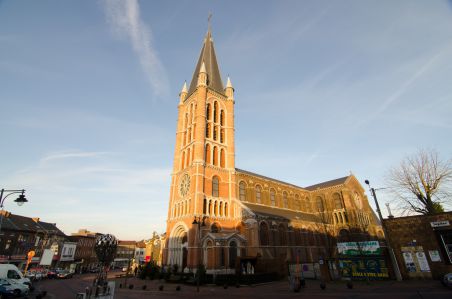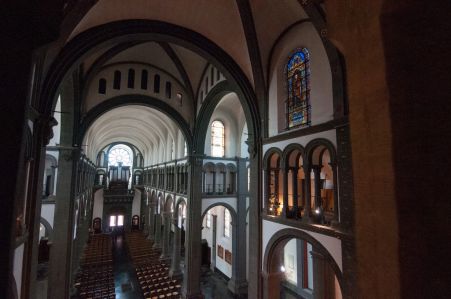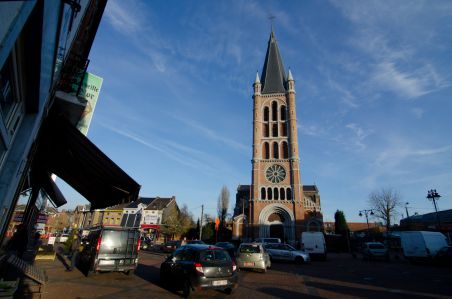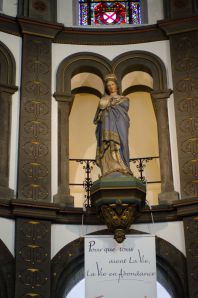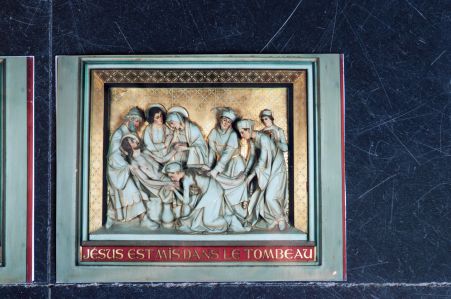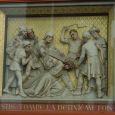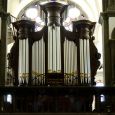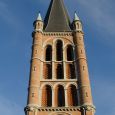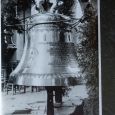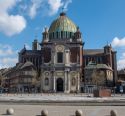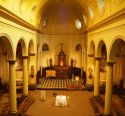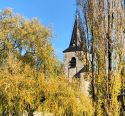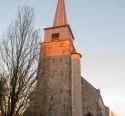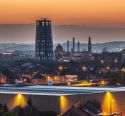Church | 1865 | Neoromanesque | Catholic Church



Map
Opening hours
01 January - 31 December
Mon 9.00 - 12.30 • 13.45 - 17.00
Tue 9.00 - 12.30 • 13.45 - 17.00
Wed 9.00 - 12.30 • 13.45 - 19.00
Thu 9.00 - 12.30 • 13.45 - 17.00
Fri 9.00 - 12.30 • 13.45 - 19.00
Sat 9.00 - 12.30 • 13.45 - 17.00
Sun 8.00 - 12.00
01 July - 31 August
Mon 9.00 - 17.00
Tue 9.00 - 17.00
Wed 9.00 - 17.00
Thu 9.00 - 17.00
Fri 9.00 - 17.00
Sat 9.00 - 17.00
Sun 8.00 - 17.00
Every day, closing of doors between 12.30 am and 1.45 pm
Religious offices
Monday : 9.30 am
Wednesday and Friday : 6 pm
Sunday : 8.30 am and 11 am
Description
Perched on a promontory the church is clearly visible from the neighbourhood. It is a monumental structure in red brick and blue stone dating from 1865 and, like many churches of this period, is built partly in Romanesque and partly in Gothic style. he building is imposing as the tower, belfry and spire is around 72metres in height.
It was renovated in 2010. Inside is a Way of the Cross, the organ, the icon of Our Lady and stained glass windows.
Photos
Media
Remarkable elements
Stained glas
In the ambulatory, five Romanesque stained glas represent different phases of Christ's life. In the upper part of the apse, seven neoclassical stained glas represent saints.
These twelve stained glas were made in 1908 by Ladon of Ghent.
Stations of the cross
On the walls of the ailes we find in high-relief the neo-gothic Stations of the Cross. This was realised by the Ghent sculptor Beule.
Organ
The organ originates from Selzate. Its builder is unknown. The whole was reconstructed by the organ builder Delmotte from Tournai in 1947. He arranged the organ for symphonic use and placed a romantic touch in it. The organ case dates from the 18th century, has 22 music pieces, 2 manuals and 3 types of sound.
Tower
The construction of the rectangular tower (38m) was completed in 1871. It contains a sound room and 2 bell rooms. At the top of the octagonal column is a cross weighing 672 kg. It is -from the bottom- 7m high and has a diameter of 2m25. This cross was restored in 1976, the column in 1991 and the tower itself in 2010.
The bells
The Germans took away 5 out of the 6 bells, which were mounted in 1874. In 1950 they were replaced by the 5 bells of Slégers-Causard. The bass (Marie-Sylvie) weighs 3000 kg (low do) . The others weigh 1500 kh (mi), 1000 kg (sol), 750 kg (la) and 250 kg (mi) respectively. These notes are the opening notes of the Latin Maria song Salve Regina.
The melody is quite simple and is composed according to the 5th Gregorian mode.
The icon of Our Lady of the Forest
The icon of Our Lady of the Forest is an example of devotion. Hence the many pilgrimages.
The story goes that around 1730 a man fell into a deep moat. From this well the man saw the image of Our Lady of Penance attached to a tree. He called on her to free him. Once liberated, the man had a chapel built out of gratitude (1740). Many pilgrims came here en masse to worship Our Lady in the Forest. These pilgrimages continue until now.


